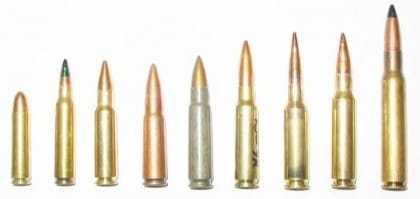I had the fortune to recently speak with COL Tamilio, PM Soldier Weapons about improvements to the current M4 carbine as well as a proposed new weapon dubbed the “Improved Carbine”. It seems that there has been some confusion over this, but there are two separate projects going on, almost simultaneously.
The Stoner family of weapons (M16/M4) have undergone numerous upgrades throughout their almost 50 year of service. The Carbine Improvement Program is focused on some of the most radical ever material improvements to the M4/M16. They consist of a piston gas system to replace the current direct-impingement gas system, improved trigger, monolithic rail, and a round counter to assist with maintenance of the weapon. According to COL Tamilio, they have already approved two Engineering Changes for the M4 which include a heavier barrel and ambidextrous controls. Additionally, they recently put out a call to industry asking what they can do to make these other changes to the current rifle. If successful, they will be spirally inserted into the Army’s weapons. Hopefully, such improvements won’t come in Black but rather a shade of Brown or Tan that blends in a little better with the Soldier’s equipment and surrounding terrain.
But making evolutionary enhancements to the current weapon is just the beginning. The Army has also written a requirement for a follow on to the venerable M16. The requirements documentation for the Improved Carbine has completed the Army’s staffing process and is currently with the Joint Requirements Oversight Council (JROC). Every major procurement program must negotiate this is hurdle where all of the services as well as SOCOM get to take a look at it and validate it. The idea is to make sure that the services aren’t trying to purchase the same or very similar items under different programs. Think of it as sort of a Department to Prevent Redundancy Department. The requirement will be there for several months and I would not expect to see the actual solicitation on the street until fall.
The Improved Carbine is intended as a no holds barred look at individual small arms in the carbine class. Despite rumors that the Improved Carbine and Squad Individual Marksman variant would share the same requirements document, possibly also with the Personal Defense Weapon, this is not the case. They needed to be broken down into separate requirements although it is possible that the Individual Carbine and Squad Individual Marksman weapons may end up relying on a common weapon. The PDW is a bit more problematic due to the Army’s desired characteristics for the weapon. The Army wants to purchase about 500,000 of the new carbines and has stipulated that they will own the Technical Data Package so that they can award production contracts for the type selected to more than one manufacturer.
Interestingly, the requirement does not specify a caliber, an operating system, nor a form factor. They are dedicated to seeing the best industry has to offer. COL Tamilio was very emphatic about this and said, “The Army is seeking an improvement to the M4 carbine and the Army is committed to testing and procuring it.”
Now here is my take on the Improved Carbine requirement.
This has been tried before, and more than once. First, in the 60s with the Special Purpose Individual Weapon (SPIW) and its offspring SALVO, Niblick, and the future Rifle Program and then again in the late 1980s with the Advanced Combat Rifle program. All pitted the industry’s best in a race for that leap ahead technology and none provided it.
Overall, it sounds good but to me has an air of a science project. “Give us the best you’ve got.” But how do you measure that? With an open call for ammunition as well as base weapon how do you objectively evaluate them against one another? There are too may variables to attribute performance. Below you see a photo featuring several of the current operational and developmental military calibers and this is by no means all inclusive. Imagine a test involving an even larger pantheon of rounds. Then imagine it further diversified by different platforms and operating systems. How much of a weapon’s success do you attribute to the ammo and how much to the weapon itself?
(l – r 7.62x33mm, 5.56x45mm, 6.8x43mm, 7.62x39mm, 7.62x45mm, 7x46mm, 6.5x47mm, 7.62x51mm, 7.62x63mm)
As we saw in the ACR competition, ammunition doesn’t just mean caliber, but rather of types of rounds. For example, the 5.56mm Colt entry featured a duplex projectile by Olin. Another round introduced by H&K as part of their G11 rifle was a caseless design in 4.7mm.
All this talk of ammunition leads me to also comment that I do not believe the Army will adopt a new caliber. My belief is based mainly on economics and one fact given to me by COL Tamilio seems to support my assertion. He related that it cost $300 million to prepare for the transition to the new “Green” 5.56 mm ammunition adopted by the Army. He said it would cost this much to transition to a new caliber OR even to alter production to make 7.62 NATO the primary ammunition.
Ultimately, this is a cautionary tale. As we have heard time and time again, “Those who fail to study history, are doomed to repeat it.” I don’t doubt COL Tamilio’s dedication to the idea, nor the Army’s for that matter, but I think they will once again validate the status quo. It is precisely what happened at the conclusion of the ACR project. The Army could identify no appreciable improvement in lethality, hit probability or reliability over the M-16 family of weapons and so they retained the M16 for further use. That was over 20 years ago and in that time, small arms technology has not progressed radically. However, time will tell.



